By Mike Smith
Question - Is the 4-2-3-1 formation with attacking full backs too advanced for the high school soccer team/athlete to be successful?
Short Answer: No, the 4-2-3-1 formation with attacking full backs is not too advanced for the high school soccer team / athlete to be successful.
The more important question to ask when choosing a formation, system and style of play is will those choices serve the strengths and abilities of your players and achieve team goals? If you feel the 4-2-3-1 with attacking full backs is the way to go, then in my experience, most high school players and teams should be able to grasp it. The key is positional and situational discipline – which can be a challenge sometimes at the high school level. I am a fan of the attacking full back and have always used at least one to some degree with my high school systems. I am also a fan of the 4-3-2-1 system – which for me is a defensive minded version of the 4-2-3-1. Here is what I have done to help clarify the formation to my players:
First , explain the basic set up as far as why the numbers of players are located in the spaces they are. For example:
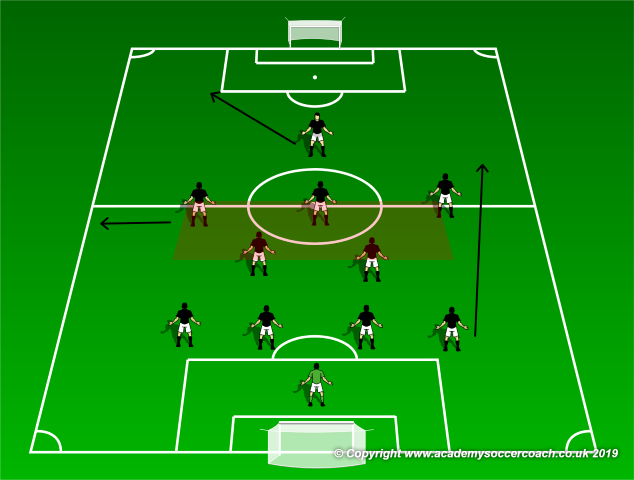
The diagram above shows one benefit of the 4-2-3-1; having 5 players in midfield. IF this is one of your goals, explain clearly to the team this is why you are running the 4-2-3-1, to gain an advantage at midfield.
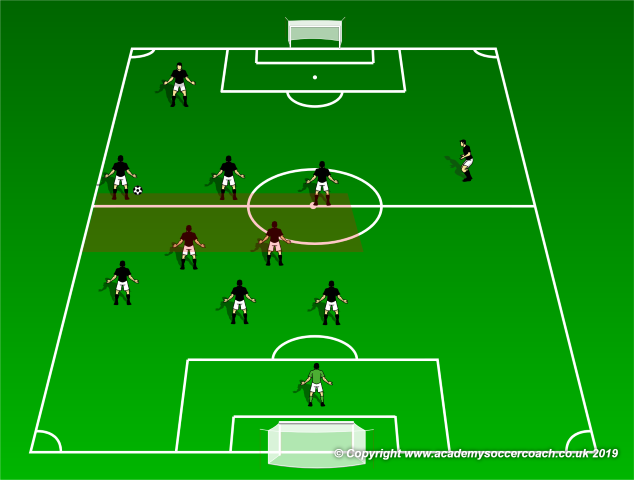
Again above, a secondary explanation could be to shift numbers to the ball while keeping the great triangles the 4-2-3-1 provides, using the lone forward as a decoy and then running the off ball fullback up the weak side. Most high school players and teams should be able to understand keeping a shape which gives a numerical advantage.
Second, clarify the roles of each position based on common game situations. A lot of young players want there to be a “magic pill” i.e. “ If I just stand here things will work.” or “ If I just kick the ball there it will help.” The defending, possessing, attacking and transitional parts of the game all require different positional awareness and discipline. I feel this has been the biggest reason I have had tactical success with my teams where other coaches have not. Making sure each player knows, - When we are defending the shape looks like this….. When we are playing out under control it looks like this…. In the defensive, transitional and attacking thirds we should look like this…. When we are just trying to knock it around it looks like this….. When we lose it in their end we do this…. etc…..this expanded awareness will make the difference and again, most players will get “it” as you progress through the season. For example:
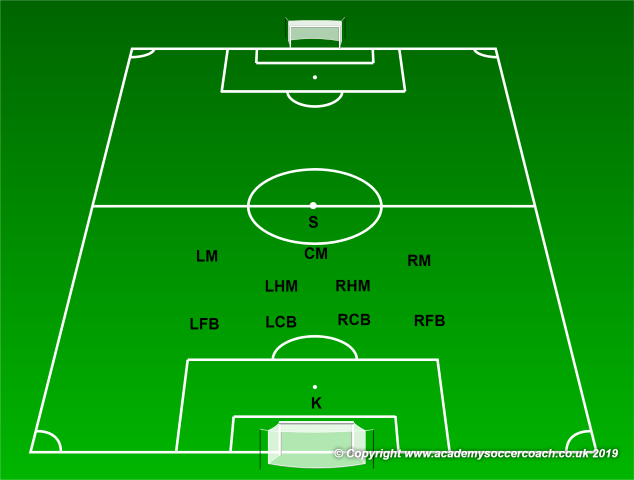
The above diagram shows a 4-2-3-1 dropped into the middle. I left the players off for clarity. During a match a team would not have to drop off this deep however I usually build my explanation of roles from a “ home “ position. This is a starting point to explain where each player should be given the situation. For example, is the lone striker going to be the target? Will they be a central or wide target? Will the attacking fullback come up on the opposite side of the striker if they go wide or actually overlap to give numbers up in the attacking space? Or both? You can easily show each positional shift from this type of “ home” set up.
Third, play to the strength of the formation – make the attacking fullbacks work. For example:
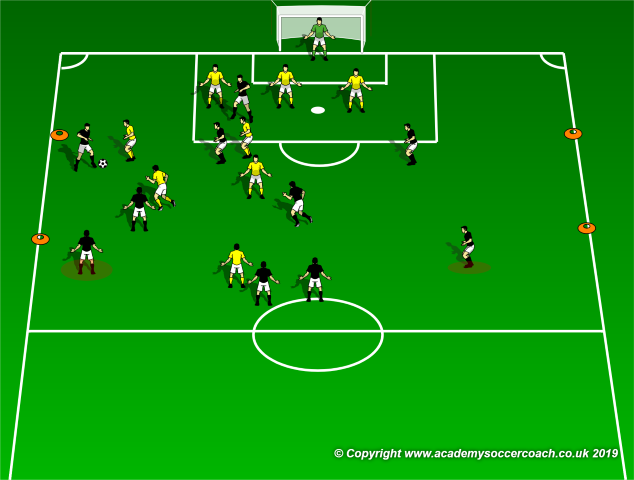
The only real issue I have had with high school teams understanding formational concepts is not in the comprehension, but the application. In the diagram above, the fullbacks for the attacking side ( black ) are shaded. I use this type of drill to put it every formational concept I use and again, the main issue is getting the teams to “see the big picture” and make the concept work in the game. In concept, the midfielder with the ball is going to have to use the supporting fullback on the ball side for help and locate the open midfielder.
While one attacking mid fielder is wide open in the center, IF this midfield should get the ball and try to turn and attack, they are going into a 3 v 2 which is low percentage. For many high school players this is their first and only option, head down, go through another players shin guards. After some work in this drill, they will understand to use the additional fullback to create more options and build; but will it carry over to the game?
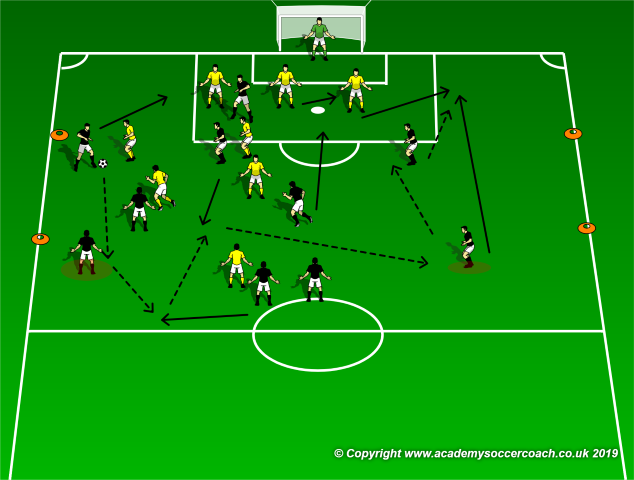
The arrows above show the movements of the ball and the players in a way which uses the fullbacks on both sides heavily in building the attack. Again, running a half field drill with numbers up to the attacking side; including restraining the 5 attacking midfielders and 4 defending midfielders in the center zone ( marked with cones ) , will help your team grasp the concept of utilizing the fullbacks in the attack.
As the attacks become more fluid and shots come easily, add defenders until it is a true half field scrimmage. The coach should get out there and not be afraid to stop play and show each player where they should be and what they should be doing. Eventually, your team will get it, the only real challenge is to get them to make it work in the game: but hey, that’s why us high school coaches get paid the big bucks!!! Good luck!
By Mike Smith
Currently the Head Coach for University Heights Academy Boys Soccer in Hopkinsville, KY , Mike is in his 14th year as a high school head coach with 23 years coaching experience overall and 34 year as a student and fan of the game. He holds a USSF D License.


